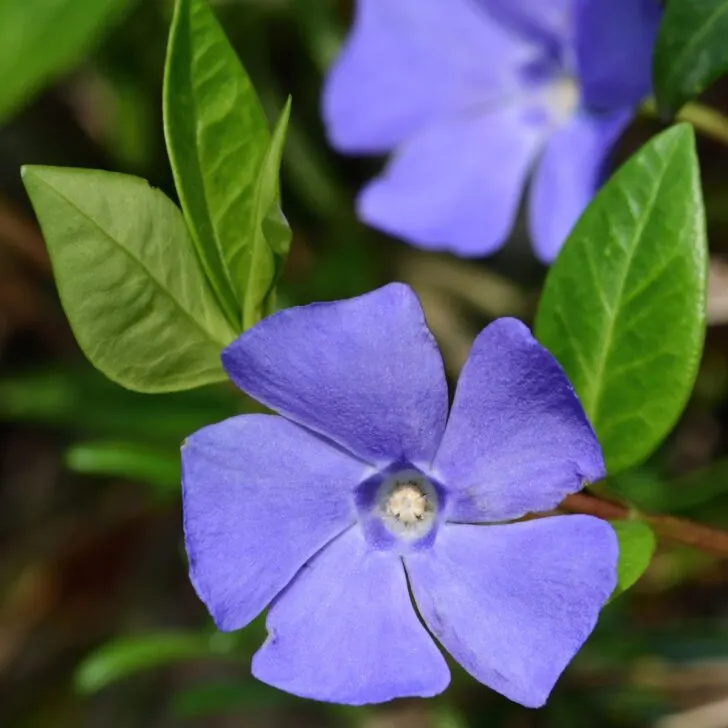Heuchera, or coral bells, is an easy-to-grow, low-maintenance perennial plant for shade. Here's how to care for heuchera in your garden!

Heuchera, also known as coral bells or alumroot, is one of my go-to plants for a shade garden. These compact, mounded plants have colorful evergreen foliage that stands out even in low light.
Many varieties also have pretty flowers that bloom throughout the summer. The blossoms attract bees, butterflies, and hummingbirds, making your garden a friendly place for these pollinator species.

Heuchera leaves come in an amazing variety of colors, ranging from almost black to silvery white and everything in between. They can have variegated leaf patterns and ruffled or smooth textures.

This native North American plant tolerates almost any growing conditions, making it extremely versatile for any spot in the garden. While some types do best in the shade, others thrive and produce the best leaf color in full sun.
Here's how to grow and care for coral bells in your garden!
This post contains affiliate links for your convenience. Purchases made through these links may earn me a small commission at no additional cost to you.
Varieties of Heuchera
There are at least 50 species of heuchera and many cultivars. They vary in leaf color, flower type, and overall size.
I have at least three different types of heuchera in my garden. My favorite is Forever Purple heuchera, which provides a bright pop of purple under our Twisty Baby Locust tree. The color doesn't fade, even when the leaves of the locust tree fall and the plant is exposed to more sunlight.

Some varieties produce more blossoms than others, and others stand out due to their leaf structure and hue. Some cultivars have upright flower clusters, and others make more open groups of small, bell-shaped blossoms.
A few of the most popular varieties of heuchera include:
- 'Obsidian,' with almost black leaves
- 'Southern Comfort,' with orange-colored leaves
- Heuchera villosa, a larger variety growing up to 2 feet high, flowering in late summer
- Heuchera sanguinea, a more compact type growing to about a foot and native to high elevation areas of the Southwest.
Whatever garden you have, you can likely find a heuchera to match!

When to Plant Heuchera
The best time to plant heuchera is in spring or fall, but can thrive when planted in warmer months as well. They are hardy in growing zones 4-9.
Where to Plant Heuchera
Consider growing heuchera as a perennial border or planted in mass in a shady or sunny garden. Check the tag to make sure your coral bells can handle the sun levels of your chosen spot.

In general, the darker the leaves, the more sun they can tolerate. However, even the more shade-tolerant varieties need a minimum of four hours of sunlight to develop brightly colored leaves and plenty of flowers.
Heuchera prefers growing in fertile, moist, and well-drained ground. However, you can also plant it in clay soil if you first amend the area with some compost or other organic matter to improve drainage and fertility. You can also grow coral bells in containers and raised beds.
How to Grow Heuchera from Seed
While garden centers and online stores sell heuchera for transplant, it's easy to grow coral bells from seed. You can harvest seeds from mature seed pods, but they might not grow out to look the same as the parent plant. Nonetheless, harvesting seeds and seeing what you get can be a fun and exciting garden project!

You can also sprinkle the seeds in the garden in the fall, and you are likely to find many sprouting up in spring. Established plants may also spread in this way.

How to Care for Heuchera
Coral bells like moist but not soggy soil, especially when the plants are newly transplanted. Once they get established, they can tolerate dry spells, but give them water if temperatures are very hot or dry for a prolonged time.

Heuchera has a shallow root system, and newly established plants can lift during freezes in winter. To prevent this, apply a thick layer of mulch around the base of the plants in the fall. Once plants have been in the ground for a couple of seasons, heaving is not likely to be a problem.
These plants respond well to fertilizing in spring. Spread a layer of compost around the plants or use a slow-release fertilizer applied to the ground around the plants. If the foliage gets raggedy over the winter, trim it back in spring to spruce up the plants for a new year of growth.
Check out these other shade loving plants!




